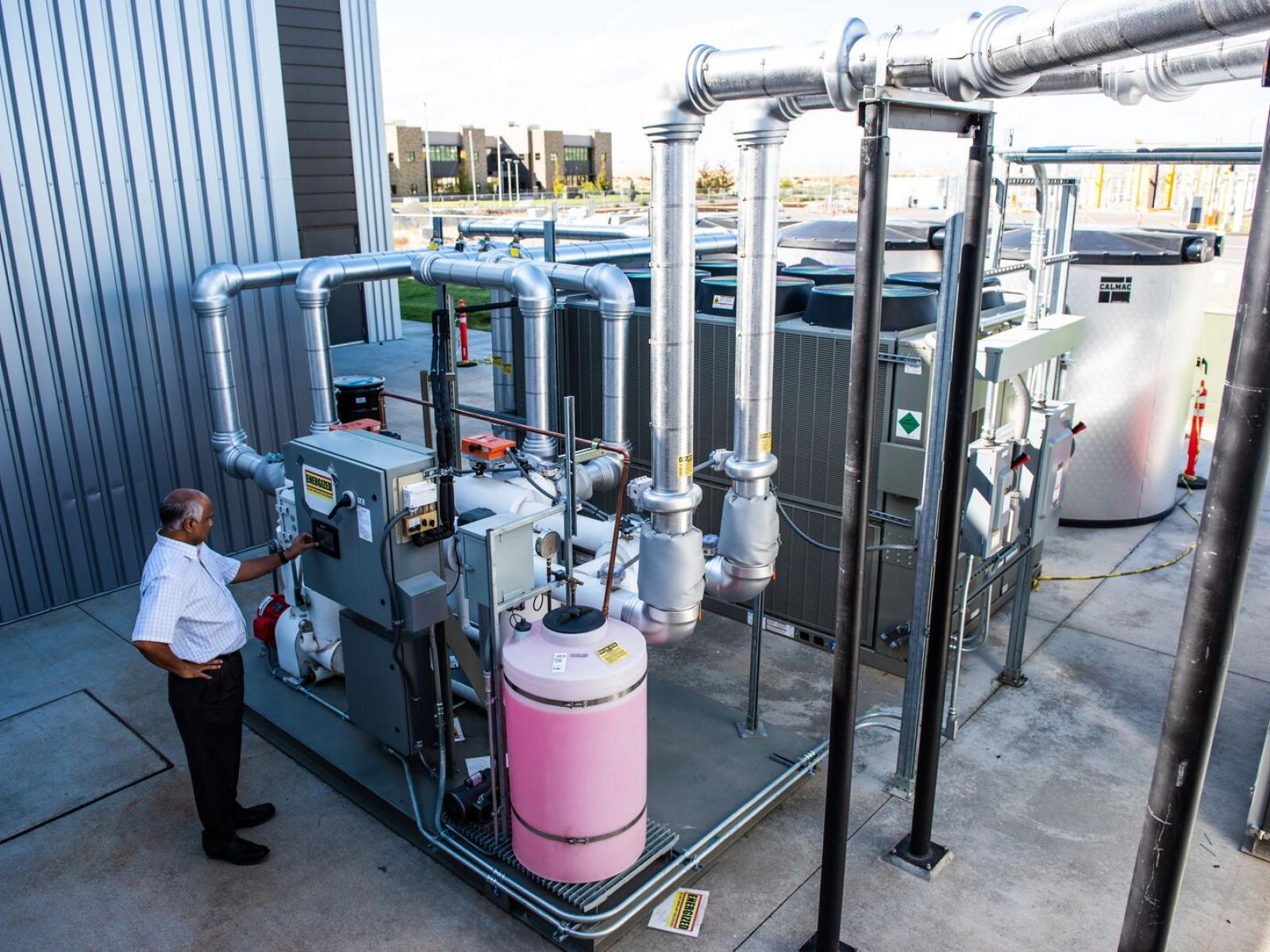Thermal Energy Storage System
Informing efficiency and transactive methods

The Thermal Energy Storage System includes a pumping station (foreground), chiller unit (middle), and three large ice storage canisters.
(Photo Andrea Starr | Pacific Northwest National Laboratory)
When the power grid heats up, buildings could help the energy system chill out.
The Thermal Energy Storage System (TESS) at Pacific Northwest National Laboratory (PNNL) is a testing resource that helps researchers better understand how building cooling methods can become contributors to energy efficiency and improved grid operations. Research conducted in TESS also could enhance clean energy use.
The storage system consists of an 80-ton chiller unit, three large ice canisters, and associated controls. The chiller generates chilled water that cools the adjacent PNNL Systems Engineering Building (SEB) and circulates glycol through the water-filled canisters to make ice.
The goal of TESS research is to discern how cooling and ice creation can be managed to take advantage of lower electricity costs and avoid higher rates. For instance, if ice is created at night when electricity rates typically are low, it can be used to cool the building the next day when power is more expensive. Results from testing will help inform future transactive energy methods, such as dynamic electricity pricing.
Installed at PNNL in early 2019, the storage system has been used in the Clean Energy and Transactive Campus project (CETC) and other research endeavors. TESS was purchased with funding from the Washington State Department of Commerce’s Clean Energy Fund (CEF), which is establishing a clean energy testbed in the state. The system is also part of PNNL’s Integrated Building Assets capability.
For more information, view the TESS flyer and the Electrical Energy Storage System flyer.